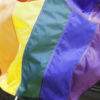Not exactly a neutral viewpoint given the body represented?Gender identity as a term was possibly popularised in the 60’s but it has been around for a lot, lot, longer than that. See below;
“Although contemporary culture likes to position gender non-conforming people as a new phenomenon, history shows otherwise. Anthropologists have long documented cultures around the world that acknowledge more than two genders. There are examples going back 3,000 years to the Iron Age, and even further back to the Copper Age“.

Exploring the history of gender expression
Guest writer Ianna Urquhart shares a multifaceted perspective of how society’s ideas around gender expression have transformed over time — from the Iron Age to our present understanding.link.ucop.edu
eg:
Pacific Islands
Long before Cook’s arrival in Hawaii, a multiple-gender tradition existed among the Kanaka Maoli indigenous society. The mahu referred to biological males or females who inhabited a gender role somewhere between, or encompassing both, the masculine and feminine. They held a sacred social role as educators and promulgators of ancient traditions and rituals.
Fa’afafine are people who identify themselves as a third-gender in Samoa, American Samoa and the Samoan diaspora. A recognized gender identity/gender role since at least the early 20th century in Samoan society — and some theorize an integral part of traditional Samoan culture — fa’afafine are male at birth and explicitly embody both masculine and feminine gender traits, fashioned in a way unique to this part of the world.
You are using an out of date browser. It may not display this or other websites correctly.
You should upgrade or use an alternative browser.
You should upgrade or use an alternative browser.
[Brighton] Crystal Palace Fan Labour Brighton Pavilion MP Candidate
- Thread starter Chicken Run
- Start date
More options
Who Replied?I’ve provided evidence, others have too.Typical mouth frothing standard responses as usual. I'm right, you're wrong, do your research correctly rather than rely on Wikipedia to try and win an argument. Confusing intersex and a greek myth with gender identity is quite stupid really. Similarly if you can provide some peer reviewed mainstream evidence that 'gender identity' existed pre 1960 I'd be interested to see it. Its simply a recent social concept, I don't get why it triggers and bothers you so much to accept its a recent invention? Why are you so insistent it is thousands of years old, its not - fact, there was no such concept before the 60s. Do you think that by somehow giving the issue a fake thousand year history it makes it more valid? I imagine your responses will be more, 'he's not read this, he knows he's wrong, he's done this he's done that blah blah. There I'm doing what your doing now, it's easy isn't it. Both on ignore now so debate and like each others posts to your hearts content, I won't see them.
Not all from Wikipedia either.
Why should we sugar coat it, you’re an adult. You’re wrong. There’s no other word for it.
It’s very clear that you will not accept any counter argument to your incorrect claim that gender identity was not around before the 1960’s. You come up with a dafter response each time.
m20gull
Well-known member
Well to start with Eddie isn't a clown fish. Secondly I thought it was only claimed that he had changed his name and preferred pronoun. If that's the only changes then no fuss.If a Clown Fish can change sex as they age then why should Eddie Izzard be any different , I really can't see what all the fuss is about
Massive exclusive in todays Argus 

 www.theargus.co.uk
www.theargus.co.uk


Eddie Izzard's life in Sussex and her favourite places
Eddie Izzard has revealed some of her favourite places in Brighton and Sussex after announcing her bid to become a Labour MP for the city
 www.theargus.co.uk
www.theargus.co.uk
Some nice comments on places in Sussex, I enjoyed seeing-Massive exclusive in todays Argus

Eddie Izzard's life in Sussex and her favourite places
Eddie Izzard has revealed some of her favourite places in Brighton and Sussex after announcing her bid to become a Labour MP for the citywww.theargus.co.uk
“Newhaven is a good place to visit, many decent people live there”

